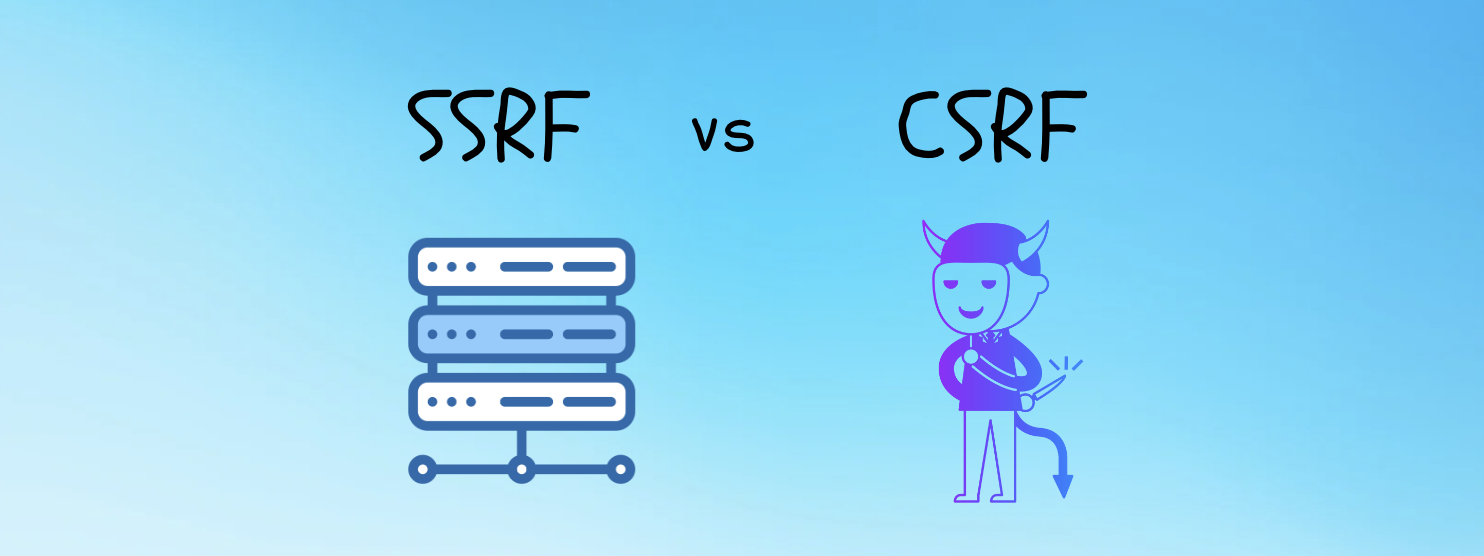[{"id":1258,"link":"https:\/\/www.muratbekgi.com\/prompt-injection-owasp-top-10-for-llm\/","name":"prompt-injection-owasp-top-10-for-llm","thumbnail":{"url":"https:\/\/i0.wp.com\/www.muratbekgi.com\/wp-content\/uploads\/2024\/11\/featured-image-e1732486812169.png?fit=1350%2C382&ssl=1","alt":""},"title":"Prompt Injection - OWASP Top 10 for LLM","author":{"name":"Murat Bekgi","link":"https:\/\/www.muratbekgi.com\/author\/grag0lm3n\/"},"date":"Nov 24, 2024","dateGMT":"2024-11-24 22:49:57","modifiedDate":"2024-11-25 04:00:05","modifiedDateGMT":"2024-11-25 04:00:05","commentCount":"0","commentStatus":"open","categories":{"coma":"<a href=\"https:\/\/www.muratbekgi.com\/category\/tips-tricks\/\" rel=\"category tag\">Tips & Tricks<\/a>","space":"<a href=\"https:\/\/www.muratbekgi.com\/category\/tips-tricks\/\" rel=\"category tag\">Tips & Tricks<\/a>"},"taxonomies":{"post_tag":""},"readTime":{"min":7,"sec":5},"status":"publish","excerpt":""},{"id":1208,"link":"https:\/\/www.muratbekgi.com\/how-i-passed-gpen\/","name":"how-i-passed-gpen","thumbnail":{"url":"https:\/\/i0.wp.com\/www.muratbekgi.com\/wp-content\/uploads\/2024\/05\/2024-05-11_19-21-28-1.png?fit=1335%2C356&ssl=1","alt":""},"title":"How I passed GPEN","author":{"name":"Murat Bekgi","link":"https:\/\/www.muratbekgi.com\/author\/grag0lm3n\/"},"date":"May 12, 2024","dateGMT":"2024-05-12 00:23:05","modifiedDate":"2024-06-18 01:50:17","modifiedDateGMT":"2024-06-18 01:50:17","commentCount":"0","commentStatus":"open","categories":{"coma":"<a href=\"https:\/\/www.muratbekgi.com\/category\/tips-tricks\/\" rel=\"category tag\">Tips & Tricks<\/a>","space":"<a href=\"https:\/\/www.muratbekgi.com\/category\/tips-tricks\/\" rel=\"category tag\">Tips & Tricks<\/a>"},"taxonomies":{"post_tag":"<a href='https:\/\/www.muratbekgi.com\/tag\/gcih\/' rel='post_tag'>GCIH<\/a><a href='https:\/\/www.muratbekgi.com\/tag\/giac\/' rel='post_tag'>GIAC<\/a><a href='https:\/\/www.muratbekgi.com\/tag\/gpen\/' rel='post_tag'>GPEN<\/a><a href='https:\/\/www.muratbekgi.com\/tag\/indexing\/' rel='post_tag'>Indexing<\/a><a href='https:\/\/www.muratbekgi.com\/tag\/sans\/' rel='post_tag'>SANS<\/a>"},"readTime":{"min":2,"sec":21},"status":"publish","excerpt":""},{"id":1155,"link":"https:\/\/www.muratbekgi.com\/how-i-passed-gcih\/","name":"how-i-passed-gcih","thumbnail":{"url":"https:\/\/i0.wp.com\/www.muratbekgi.com\/wp-content\/uploads\/2023\/12\/gcih-e1703545421745.png?fit=1212%2C364&ssl=1","alt":""},"title":"How I passed GCIH","author":{"name":"Murat Bekgi","link":"https:\/\/www.muratbekgi.com\/author\/grag0lm3n\/"},"date":"Dec 25, 2023","dateGMT":"2023-12-25 22:57:24","modifiedDate":"2023-12-25 23:06:16","modifiedDateGMT":"2023-12-25 23:06:16","commentCount":"0","commentStatus":"open","categories":{"coma":"<a href=\"https:\/\/www.muratbekgi.com\/category\/tips-tricks\/\" rel=\"category tag\">Tips & Tricks<\/a>","space":"<a href=\"https:\/\/www.muratbekgi.com\/category\/tips-tricks\/\" rel=\"category tag\">Tips & Tricks<\/a>"},"taxonomies":{"post_tag":""},"readTime":{"min":3,"sec":1},"status":"publish","excerpt":""},{"id":1120,"link":"https:\/\/www.muratbekgi.com\/indexing-giac\/","name":"indexing-giac","thumbnail":{"url":"https:\/\/i0.wp.com\/www.muratbekgi.com\/wp-content\/uploads\/2023\/11\/note-2527458_1280-e1700606330858.jpg?fit=1280%2C531&ssl=1","alt":""},"title":"Indexing Your Books for GIAC Exam Preparation","author":{"name":"Murat Bekgi","link":"https:\/\/www.muratbekgi.com\/author\/grag0lm3n\/"},"date":"Nov 21, 2023","dateGMT":"2023-11-21 22:42:21","modifiedDate":"2023-11-21 23:38:50","modifiedDateGMT":"2023-11-21 23:38:50","commentCount":"0","commentStatus":"open","categories":{"coma":"<a href=\"https:\/\/www.muratbekgi.com\/category\/tips-tricks\/\" rel=\"category tag\">Tips & Tricks<\/a>","space":"<a href=\"https:\/\/www.muratbekgi.com\/category\/tips-tricks\/\" rel=\"category tag\">Tips & Tricks<\/a>"},"taxonomies":{"post_tag":""},"readTime":{"min":3,"sec":38},"status":"publish","excerpt":""},{"id":1093,"link":"https:\/\/www.muratbekgi.com\/csrf-vs-ssrf\/","name":"csrf-vs-ssrf","thumbnail":{"url":"https:\/\/i0.wp.com\/www.muratbekgi.com\/wp-content\/uploads\/2023\/09\/Screenshot-2023-09-24-at-2.49.34-PM-e1695585146857.png?fit=1484%2C556&ssl=1","alt":""},"title":"CSRF vs SSRF","author":{"name":"Murat Bekgi","link":"https:\/\/www.muratbekgi.com\/author\/grag0lm3n\/"},"date":"Sep 30, 2023","dateGMT":"2023-09-30 16:28:12","modifiedDate":"2023-09-30 16:28:17","modifiedDateGMT":"2023-09-30 16:28:17","commentCount":"0","commentStatus":"open","categories":{"coma":"<a href=\"https:\/\/www.muratbekgi.com\/category\/tips-tricks\/\" rel=\"category tag\">Tips & Tricks<\/a>","space":"<a href=\"https:\/\/www.muratbekgi.com\/category\/tips-tricks\/\" rel=\"category tag\">Tips & Tricks<\/a>"},"taxonomies":{"post_tag":""},"readTime":{"min":2,"sec":54},"status":"publish","excerpt":""},{"id":1083,"link":"https:\/\/www.muratbekgi.com\/ssrf-vs-sqli\/","name":"ssrf-vs-sqli","thumbnail":{"url":"https:\/\/i0.wp.com\/www.muratbekgi.com\/wp-content\/uploads\/2023\/09\/Screenshot-2023-09-24-at-2.32.38-PM-e1695584128365.png?fit=1041%2C440&ssl=1","alt":""},"title":"SSRF vs SQLi","author":{"name":"Murat Bekgi","link":"https:\/\/www.muratbekgi.com\/author\/grag0lm3n\/"},"date":"Sep 24, 2023","dateGMT":"2023-09-24 19:14:47","modifiedDate":"2023-09-24 20:03:25","modifiedDateGMT":"2023-09-24 20:03:25","commentCount":"0","commentStatus":"open","categories":{"coma":"<a href=\"https:\/\/www.muratbekgi.com\/category\/tips-tricks\/\" rel=\"category tag\">Tips & Tricks<\/a>","space":"<a href=\"https:\/\/www.muratbekgi.com\/category\/tips-tricks\/\" rel=\"category tag\">Tips & Tricks<\/a>"},"taxonomies":{"post_tag":"<a href='https:\/\/www.muratbekgi.com\/tag\/sqli\/' rel='post_tag'>sqli<\/a><a href='https:\/\/www.muratbekgi.com\/tag\/ssrf\/' rel='post_tag'>ssrf<\/a><a href='https:\/\/www.muratbekgi.com\/tag\/ssrf-vs-sqli\/' rel='post_tag'>ssrf vs sqli<\/a>"},"readTime":{"min":3,"sec":11},"status":"publish","excerpt":""},{"id":914,"link":"https:\/\/www.muratbekgi.com\/flaws2-cloud-walkthrough-all-flaws2-cloud-levels\/","name":"flaws2-cloud-walkthrough-all-flaws2-cloud-levels","thumbnail":{"url":"https:\/\/i0.wp.com\/www.muratbekgi.com\/wp-content\/uploads\/2023\/08\/2023-08-06_12-45-09-e1692243998596.png?fit=778%2C215&ssl=1","alt":""},"title":"flaws2.cloud walkthrough | all flaws2.cloud levels","author":{"name":"Murat Bekgi","link":"https:\/\/www.muratbekgi.com\/author\/grag0lm3n\/"},"date":"Aug 5, 2023","dateGMT":"2023-08-05 04:10:10","modifiedDate":"2023-08-06 18:02:23","modifiedDateGMT":"2023-08-06 18:02:23","commentCount":"0","commentStatus":"open","categories":{"coma":"<a href=\"https:\/\/www.muratbekgi.com\/category\/tips-tricks\/\" rel=\"category tag\">Tips & Tricks<\/a>","space":"<a href=\"https:\/\/www.muratbekgi.com\/category\/tips-tricks\/\" rel=\"category tag\">Tips & Tricks<\/a>"},"taxonomies":{"post_tag":""},"readTime":{"min":5,"sec":50},"status":"publish","excerpt":""},{"id":634,"link":"https:\/\/www.muratbekgi.com\/flaws-cloud-walkthrough-all-levels\/","name":"flaws-cloud-walkthrough-all-levels","thumbnail":{"url":"https:\/\/i0.wp.com\/www.muratbekgi.com\/wp-content\/uploads\/2023\/07\/main-pic-e1692244070341.png?fit=918%2C215&ssl=1","alt":""},"title":"flaws.cloud walkthrough | all flaws.cloud levels","author":{"name":"Murat Bekgi","link":"https:\/\/www.muratbekgi.com\/author\/grag0lm3n\/"},"date":"Jul 29, 2023","dateGMT":"2023-07-29 01:27:42","modifiedDate":"2023-08-06 17:58:38","modifiedDateGMT":"2023-08-06 17:58:38","commentCount":"0","commentStatus":"open","categories":{"coma":"<a href=\"https:\/\/www.muratbekgi.com\/category\/tips-tricks\/\" rel=\"category tag\">Tips & Tricks<\/a>","space":"<a href=\"https:\/\/www.muratbekgi.com\/category\/tips-tricks\/\" rel=\"category tag\">Tips & Tricks<\/a>"},"taxonomies":{"post_tag":""},"readTime":{"min":13,"sec":36},"status":"publish","excerpt":""},{"id":510,"link":"https:\/\/www.muratbekgi.com\/encoding\/","name":"encoding","thumbnail":{"url":"https:\/\/i0.wp.com\/www.muratbekgi.com\/wp-content\/uploads\/2023\/07\/pexels-photo-7319070-e1689779194244.jpeg?fit=1880%2C878&ssl=1","alt":""},"title":"The Power of Encoding: Safeguarding Web Applications and Preventing Common Attacks","author":{"name":"Murat Bekgi","link":"https:\/\/www.muratbekgi.com\/author\/grag0lm3n\/"},"date":"Jul 18, 2023","dateGMT":"2023-07-18 02:42:14","modifiedDate":"2023-08-01 05:36:25","modifiedDateGMT":"2023-08-01 05:36:25","commentCount":"0","commentStatus":"open","categories":{"coma":"<a href=\"https:\/\/www.muratbekgi.com\/category\/tips-tricks\/\" rel=\"category tag\">Tips & Tricks<\/a>","space":"<a href=\"https:\/\/www.muratbekgi.com\/category\/tips-tricks\/\" rel=\"category tag\">Tips & Tricks<\/a>"},"taxonomies":{"post_tag":"<a href='https:\/\/www.muratbekgi.com\/tag\/burp-suite\/' rel='post_tag'>burp suite<\/a><a href='https:\/\/www.muratbekgi.com\/tag\/command-line-tools\/' rel='post_tag'>Command Line Tools<\/a><a href='https:\/\/www.muratbekgi.com\/tag\/context-aware-encoding\/' rel='post_tag'>Context-Aware Encoding<\/a><a href='https:\/\/www.muratbekgi.com\/tag\/cookie-handling\/' rel='post_tag'>Cookie Handling<\/a><a href='https:\/\/www.muratbekgi.com\/tag\/cross-site-scripting\/' rel='post_tag'>Cross-Site Scripting<\/a><a href='https:\/\/www.muratbekgi.com\/tag\/cyberchef\/' rel='post_tag'>CyberChef<\/a><a href='https:\/\/www.muratbekgi.com\/tag\/data-integrity\/' rel='post_tag'>data integrity<\/a><a href='https:\/\/www.muratbekgi.com\/tag\/data-protection\/' rel='post_tag'>data protection<\/a><a href='https:\/\/www.muratbekgi.com\/tag\/defense-in-depth\/' rel='post_tag'>Defense in Depth<\/a><a href='https:\/\/www.muratbekgi.com\/tag\/developer-training\/' rel='post_tag'>Developer Training<\/a><a href='https:\/\/www.muratbekgi.com\/tag\/dom-based-xss\/' rel='post_tag'>DOM-based XSS<\/a><a href='https:\/\/www.muratbekgi.com\/tag\/encoding\/' rel='post_tag'>encoding<\/a><a href='https:\/\/www.muratbekgi.com\/tag\/file-inclusion-attacks\/' rel='post_tag'>File Inclusion Attacks<\/a><a href='https:\/\/www.muratbekgi.com\/tag\/gnu-core-utilities\/' rel='post_tag'>GNU Core Utilities<\/a><a href='https:\/\/www.muratbekgi.com\/tag\/html-entity-encoding\/' rel='post_tag'>HTML Entity Encoding<\/a><a href='https:\/\/www.muratbekgi.com\/tag\/input-validation\/' rel='post_tag'>Input Validation<\/a><a href='https:\/\/www.muratbekgi.com\/tag\/javascript-escaping\/' rel='post_tag'>JavaScript Escaping<\/a><a href='https:\/\/www.muratbekgi.com\/tag\/least-privilege\/' rel='post_tag'>Least Privilege<\/a><a href='https:\/\/www.muratbekgi.com\/tag\/output-encoding\/' rel='post_tag'>Output Encoding<\/a><a href='https:\/\/www.muratbekgi.com\/tag\/owasp-encoder-project\/' rel='post_tag'>OWASP Encoder Project<\/a><a href='https:\/\/www.muratbekgi.com\/tag\/parameterized-queries\/' rel='post_tag'>Parameterized Queries<\/a><a href='https:\/\/www.muratbekgi.com\/tag\/path-traversal\/' rel='post_tag'>Path Traversal<\/a><a href='https:\/\/www.muratbekgi.com\/tag\/prepared-statements\/' rel='post_tag'>Prepared Statements<\/a><a href='https:\/\/www.muratbekgi.com\/tag\/sandboxing\/' rel='post_tag'>Sandboxing<\/a><a href='https:\/\/www.muratbekgi.com\/tag\/secure-file-uploads\/' rel='post_tag'>Secure File Uploads<\/a><a href='https:\/\/www.muratbekgi.com\/tag\/security\/' rel='post_tag'>security<\/a><a href='https:\/\/www.muratbekgi.com\/tag\/security-audits\/' rel='post_tag'>Security Audits<\/a><a href='https:\/\/www.muratbekgi.com\/tag\/sql-injection\/' rel='post_tag'>SQL Injection<\/a><a href='https:\/\/www.muratbekgi.com\/tag\/url-encoding\/' rel='post_tag'>URL Encoding<\/a><a href='https:\/\/www.muratbekgi.com\/tag\/web-applications\/' rel='post_tag'>Web Applications<\/a><a href='https:\/\/www.muratbekgi.com\/tag\/web-development\/' rel='post_tag'>web development<\/a><a href='https:\/\/www.muratbekgi.com\/tag\/whitelisting\/' rel='post_tag'>Whitelisting<\/a><a href='https:\/\/www.muratbekgi.com\/tag\/xss\/' rel='post_tag'>XSS<\/a><a href='https:\/\/www.muratbekgi.com\/tag\/xss-attacks\/' rel='post_tag'>XSS Attacks<\/a>"},"readTime":{"min":10,"sec":45},"status":"publish","excerpt":""},{"id":482,"link":"https:\/\/www.muratbekgi.com\/turning-http-into-https-for-free-with-lets-encrypt\/","name":"turning-http-into-https-for-free-with-lets-encrypt","thumbnail":{"url":"https:\/\/i0.wp.com\/www.muratbekgi.com\/wp-content\/uploads\/2023\/07\/https-3344700_1280.jpg?fit=1280%2C512&ssl=1","alt":""},"title":"Turning HTTP into HTTPS for Free with Let's Encrypt","author":{"name":"Murat Bekgi","link":"https:\/\/www.muratbekgi.com\/author\/grag0lm3n\/"},"date":"Jul 16, 2023","dateGMT":"2023-07-16 01:30:00","modifiedDate":"2023-08-02 04:08:26","modifiedDateGMT":"2023-08-02 04:08:26","commentCount":"0","commentStatus":"open","categories":{"coma":"<a href=\"https:\/\/www.muratbekgi.com\/category\/tips-tricks\/\" rel=\"category tag\">Tips & Tricks<\/a>","space":"<a href=\"https:\/\/www.muratbekgi.com\/category\/tips-tricks\/\" rel=\"category tag\">Tips & Tricks<\/a>"},"taxonomies":{"post_tag":"<a href='https:\/\/www.muratbekgi.com\/tag\/certificate-authority\/' rel='post_tag'>Certificate Authority<\/a><a href='https:\/\/www.muratbekgi.com\/tag\/cybersecurity\/' rel='post_tag'>cybersecurity<\/a><a href='https:\/\/www.muratbekgi.com\/tag\/data-protection\/' rel='post_tag'>data protection<\/a><a href='https:\/\/www.muratbekgi.com\/tag\/encryption\/' rel='post_tag'>encryption<\/a><a href='https:\/\/www.muratbekgi.com\/tag\/http-redirection\/' rel='post_tag'>HTTP Redirection<\/a><a href='https:\/\/www.muratbekgi.com\/tag\/http-to-https\/' rel='post_tag'>HTTP to HTTPS<\/a><a href='https:\/\/www.muratbekgi.com\/tag\/https\/' rel='post_tag'>HTTPS<\/a><a href='https:\/\/www.muratbekgi.com\/tag\/lets-encrypt\/' rel='post_tag'>Let's Encrypt<\/a><a href='https:\/\/www.muratbekgi.com\/tag\/online-security\/' rel='post_tag'>Online Security<\/a><a href='https:\/\/www.muratbekgi.com\/tag\/secure-communication\/' rel='post_tag'>secure communication<\/a><a href='https:\/\/www.muratbekgi.com\/tag\/ssl-certificate\/' rel='post_tag'>SSL Certificate<\/a><a href='https:\/\/www.muratbekgi.com\/tag\/ssl-tls\/' rel='post_tag'>SSL\/TLS<\/a><a href='https:\/\/www.muratbekgi.com\/tag\/ssl-tls-certificate-installation\/' rel='post_tag'>SSL\/TLS Certificate Installation<\/a><a href='https:\/\/www.muratbekgi.com\/tag\/ssl-tls-configuration\/' rel='post_tag'>SSL\/TLS Configuration<\/a><a href='https:\/\/www.muratbekgi.com\/tag\/ssl-tls-renewal\/' rel='post_tag'>SSL\/TLS Renewal<\/a><a href='https:\/\/www.muratbekgi.com\/tag\/web-security\/' rel='post_tag'>web security<\/a><a href='https:\/\/www.muratbekgi.com\/tag\/web-server-configuration\/' rel='post_tag'>Web Server Configuration<\/a><a href='https:\/\/www.muratbekgi.com\/tag\/website-security\/' rel='post_tag'>Website Security<\/a>"},"readTime":{"min":1,"sec":57},"status":"publish","excerpt":"TLS, HTTP, HTTPS, encryption, SSL, Let's Encrypt, OpenSSL, web security, secure communication, data protection, certificate, cryptographic protocol, symmetric encryption, asymmetric encryption, SSL\/TLS handshake, web server, domain validation, automatic certificate renewal"},{"id":515,"link":"https:\/\/www.muratbekgi.com\/ssl-vs-tls-understanding-the-differences\/","name":"ssl-vs-tls-understanding-the-differences","thumbnail":{"url":"https:\/\/i0.wp.com\/www.muratbekgi.com\/wp-content\/uploads\/2023\/07\/pic-e1689367280438.webp?fit=1460%2C459&ssl=1","alt":""},"title":"SSL vs TLS: Understanding the Differences","author":{"name":"Murat Bekgi","link":"https:\/\/www.muratbekgi.com\/author\/grag0lm3n\/"},"date":"Jul 15, 2023","dateGMT":"2023-07-15 20:11:46","modifiedDate":"2023-08-02 03:50:45","modifiedDateGMT":"2023-08-02 03:50:45","commentCount":"0","commentStatus":"open","categories":{"coma":"<a href=\"https:\/\/www.muratbekgi.com\/category\/tips-tricks\/\" rel=\"category tag\">Tips & Tricks<\/a>","space":"<a href=\"https:\/\/www.muratbekgi.com\/category\/tips-tricks\/\" rel=\"category tag\">Tips & Tricks<\/a>"},"taxonomies":{"post_tag":""},"readTime":{"min":5,"sec":0},"status":"publish","excerpt":""},{"id":478,"link":"https:\/\/www.muratbekgi.com\/hashing\/","name":"hashing","thumbnail":{"url":"https:\/\/i0.wp.com\/www.muratbekgi.com\/wp-content\/uploads\/2023\/07\/arrow-145785_1280-e1689893998786.png?fit=1280%2C332&ssl=1","alt":""},"title":"Hashing: The Key to Secure Data Integrity","author":{"name":"Murat Bekgi","link":"https:\/\/www.muratbekgi.com\/author\/grag0lm3n\/"},"date":"Jul 14, 2023","dateGMT":"2023-07-14 01:02:00","modifiedDate":"2023-08-02 03:52:15","modifiedDateGMT":"2023-08-02 03:52:15","commentCount":"0","commentStatus":"open","categories":{"coma":"<a href=\"https:\/\/www.muratbekgi.com\/category\/tips-tricks\/\" rel=\"category tag\">Tips & Tricks<\/a>","space":"<a href=\"https:\/\/www.muratbekgi.com\/category\/tips-tricks\/\" rel=\"category tag\">Tips & Tricks<\/a>"},"taxonomies":{"post_tag":"<a href='https:\/\/www.muratbekgi.com\/tag\/bcrypt\/' rel='post_tag'>bcrypt<\/a><a href='https:\/\/www.muratbekgi.com\/tag\/cryptographic-techniques\/' rel='post_tag'>cryptographic techniques<\/a><a href='https:\/\/www.muratbekgi.com\/tag\/data-authenticity\/' rel='post_tag'>data authenticity<\/a><a href='https:\/\/www.muratbekgi.com\/tag\/data-integrity\/' rel='post_tag'>data integrity<\/a><a href='https:\/\/www.muratbekgi.com\/tag\/data-protection\/' rel='post_tag'>data protection<\/a><a href='https:\/\/www.muratbekgi.com\/tag\/data-security\/' rel='post_tag'>data security<\/a><a href='https:\/\/www.muratbekgi.com\/tag\/data-tampering\/' rel='post_tag'>data tampering<\/a><a href='https:\/\/www.muratbekgi.com\/tag\/digital-signatures\/' rel='post_tag'>digital signatures<\/a><a href='https:\/\/www.muratbekgi.com\/tag\/efficiency\/' rel='post_tag'>efficiency<\/a><a href='https:\/\/www.muratbekgi.com\/tag\/hash-commands\/' rel='post_tag'>hash commands<\/a><a href='https:\/\/www.muratbekgi.com\/tag\/hash-function\/' rel='post_tag'>hash function<\/a><a href='https:\/\/www.muratbekgi.com\/tag\/hashing\/' rel='post_tag'>hashing<\/a><a href='https:\/\/www.muratbekgi.com\/tag\/hashing-algorithms\/' rel='post_tag'>hashing algorithms<\/a><a href='https:\/\/www.muratbekgi.com\/tag\/javascript\/' rel='post_tag'>JavaScript<\/a><a href='https:\/\/www.muratbekgi.com\/tag\/linux-terminal\/' rel='post_tag'>Linux Terminal<\/a><a href='https:\/\/www.muratbekgi.com\/tag\/macos-terminal\/' rel='post_tag'>macOS Terminal<\/a><a href='https:\/\/www.muratbekgi.com\/tag\/password-security\/' rel='post_tag'>password security<\/a><a href='https:\/\/www.muratbekgi.com\/tag\/password-storage\/' rel='post_tag'>password storage<\/a><a href='https:\/\/www.muratbekgi.com\/tag\/powershell\/' rel='post_tag'>PowerShell<\/a><a href='https:\/\/www.muratbekgi.com\/tag\/programming-languages\/' rel='post_tag'>programming languages<\/a><a href='https:\/\/www.muratbekgi.com\/tag\/python\/' rel='post_tag'>Python<\/a><a href='https:\/\/www.muratbekgi.com\/tag\/sha-256\/' rel='post_tag'>SHA-256<\/a>"},"readTime":{"min":3,"sec":23},"status":"publish","excerpt":""}]

Leave a Reply